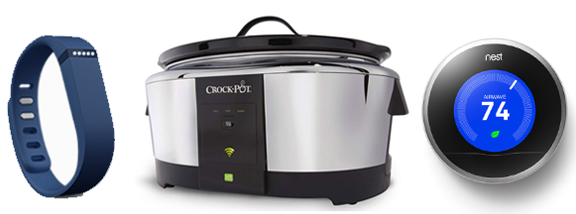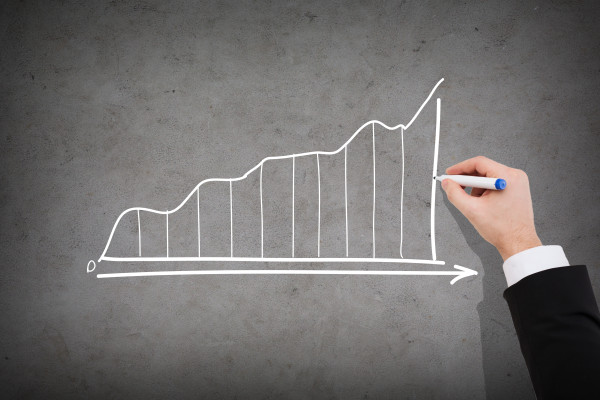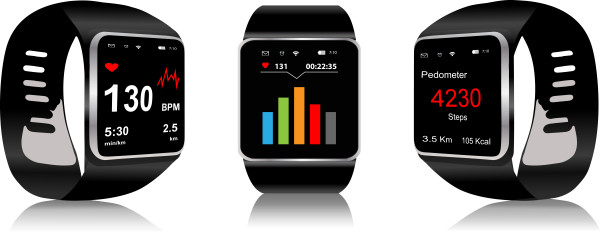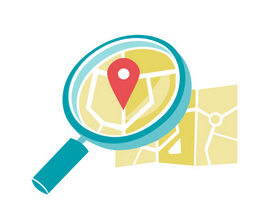Wearables, Connected Homes, Mobile & The Future Of Analytics
The world around us is changing at speeds never seen before. Mobile devices are collecting countless levels of data through innovative technologies like motion coprocessors, gyrometers, GPS, ambient light sensors, application analytics and more. Consumers are now connecting their physical bodies to electronic devices such as Fitbit and other health monitors. We are also seeing a […]
The world around us is changing at speeds never seen before. Mobile devices are collecting countless levels of data through innovative technologies like motion coprocessors, gyrometers, GPS, ambient light sensors, application analytics and more.
Consumers are now connecting their physical bodies to electronic devices such as Fitbit and other health monitors.
We are also seeing a huge increase in the number of “smart” homes equipped with connected lighting, air conditioning, all the way to internet-connected refrigerators. All this is on top of the numerous connected devices already found in modern homes like iPhones, iPads, printers, connected TVs, game consoles… and did I mention the rise in connected cars?
Coming from a data background, I am acutely aware of the amount of data generated by devices around us. Let me tell you, we are not even scratching the surface yet. Today’s devices are already generating millions of data points — a good example can be seen in the frequent location data view on an iPhone (which records all your movements in the background) or the data that’s included with each digital image you take (EXIF data).
With the huge leaps that digital technology has made over the past few years, we are starting to see companies tapping deeper and deeper into these massive data streams, positioning us on the verge of a new era of analytics and measurements.
According to thought leader Dr. Thomas Davenport, we are now at a stage he calls Analytics 3.0; 1.0 was business intelligence, 2.0 was big data and today, 3.0 is embedded analytics.
I am a big fan of Davenport’s work, and I think we need to be very aware of the implications for media, advertising, privacy, and the mindset change necessary to make Analytics 3.0 a daily reality for more businesses.
I believe that by 2015, the advertising and media sector will start to leverage 3.0’s rich data streams in remarkable ways — ways that will enable advertisers to communicate with consumers with far more relevance than ever before. The potential is mind-blowing.
However, as the technology and its potential applications expand, so do consumers’ privacy concerns and the challenges that go with them? — Luckily, how this is received may depend on the demographic rather than be broadly applicable. Here’s one example that’s close to home.
During dinner with my family this weekend, I brought up the topic of Facebook’s recent announcement about changes to its mobile app. In an attempt to win the second-screen game, Facebook will use your smartphone’s microphones to listen to your background audio and identify music and TV shows you are watching, and then use this data to target you more efficiently and present more relevant content.
This news received very mixed reactions. My wife was disturbed by the idea that Facebook would listen to her while her phone was on (although Facebook claims this opt-in capability will not pick up conversations).
Surprisingly, my teenage daughter, who is constantly wrapped up in highly secretive teen gossip and conversations, was extremely excited about this idea; she said that this would be great and she loves how some sites are already showing her relevant books and content.
Advertising Ecosystem Value Exchange
So, what does this mean?
Today’s digital native teens understand the value exchange of the advertising ecosystem and are willing to share some information about themselves in order to get relevant content and offers. They are not afraid to share data, and they opt in to everything. They understand the model and are actively participating.
It’s time for advertisers to start leveraging all that data to see what Analytics 3.0 will enable us to do — and come up with innovative ways to use it to reach audiences more effectively.
Devices will soon offer storage and analytical capabilities that will go way beyond what we are dealing with today. Just think of the data on your mobile device. Today we look at browsing history, great. But what if we combine the browsing history with the location data? That will give us a true story of what was consumed and where.
What if we could evaluate device movement once a page is completed loading? This could give us insights on sharing in real time and space (if I see something interesting, I might hand the phone to my colleagues or family to look at it as well, which will create a unique and measurable motion).
Let’s look at some examples of the data we could collect and some hypothetical ideas about how to leverage it (some of which have a potential creepy factor for those of us who are not eager-to-share teenagers).
1. Wearable Devices, Health Monitoring & Your TV
You are wearing a fitness/health device and watching television in your bedroom. The device is linked to your TV through shared logins or a simple linkage through your phone; so now, your TV knows about your body’s activity levels including your sleep/wake patterns.
Advertisers will make smarter TV buys and stop sending commercials to sleeping consumers. Taking this one step further, since your fitness device knows your activity levels, it could inform which commercials you see — for example, more active consumers might get the stepper and workout equipment commercials which are wasted on me. ;)
2. Wearable, Mobile & TV
To build on the example above, looping your smartphone into this relationship will give advertisers an additional dataset. Your GPS and cell tower data tell us where you have been locally and if you have been out of town/on vacation. We know if you go to the gym, play tennis or like to dine out.
Based on this specific data, we are now able to send you digital (smartphone) and analog (TV) ads that are highly relevant to your behavior (and travels).
3. Location-Based Understanding
How do advertisers know where you go? Our mobile devices are constantly collecting information about our location and movements.
Just check your iPhone under Settings (Privacy – Location Information – System Services – Frequent Locations). The iPhone by default records all your movements and patterns. Advertisers could leverage this data to better understand individual consumer behavior and determine their value more accurately.
For example, I go to a coffee shop once a week; my wife goes almost every weekday. In a real-time bidding environment, her value to a coffee advertiser should be five times greater than mine based on her location history.
Or we can use historic behavior to send the right ad at the right time to the right person. If we know that someone goes to the movies every Friday, we should start sending targeted movie ads to him on Thursday instead of Saturday.
Linking this back to the rise in beacons and GPS-enabled phones, it is conceivable that we will be able to measure the impact a billboard had on us based on visits to or engagements with brand assets while in proximity to the brand’s billboard.
4. Web Analytics & Spatial Relations
I believe in 2015, we will be able to collect new forms of data, through the device browser, about how a mobile device is being used in its environment; this will allow us to segment web analytics or media consumption behavior in a much more granular way.
This next-generation information collection goes beyond device model and manufacturer to many more physical-world metrics such as device orientation in 3D space, ambient light levels, elevation of ground or change in user position (moving vs. static).
We could then start to segment and target people based on a new set of options like whether someone is at home/work or on the move, or lying down as opposed to standing up.
5. Connected Homes
With connected refrigerators, lights, thermostats and other sensors in the home, we can glean insights into the user’s current environment. Is it dark? Is it warm or cold? Is the TV on or off? What are they watching? Who is home? This and more can be gained by connecting addressable advertising with connected homes.
Taking this one step further, sooner or later our fridge will know what we are low on, and send us ads or recommendations based on previous contents and consumption patterns. Our connected TVs will know what we watch and who is watching; this will allow marketers and networks to bring truly relevant content to the viewer’s screen.
I could go on and on, but I think you get the point. Major changes are on the horizon, thanks to these embedded analytics and the hyper-granular data they deliver. With all this data and possible insights I foresee a major rise in new suites of business intelligence tools as well as agencies and companies specializing in these new types of data streams.
As we can see, all of this connectivity is ushering in a new era in advertising through Analytics 3.0. Consumers will have to be willing to share a lot more of their lives in order to be served laser-targeted ads and content. But leveraging all this data reveals a much larger implication — that once we start to receive, collect and analyze it all, we will truly have what I would call Bigger-Than-Life Data.
Opinions expressed in this article are those of the guest author and not necessarily MarTech. Staff authors are listed here.
Related stories



